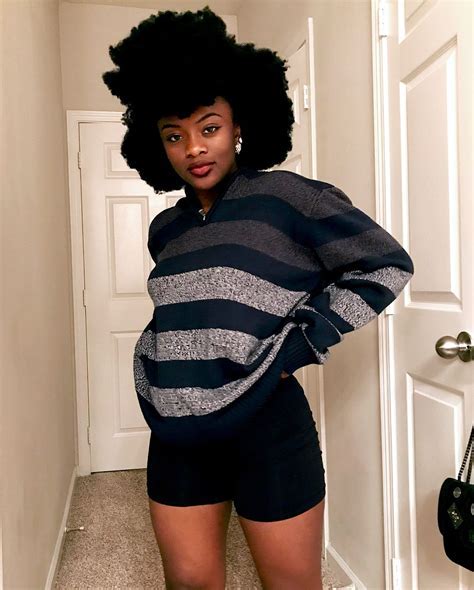Introduction

In a world where hair trends ebb and flow, the desire for natural, healthy tresses remains unwavering. The “back2natural” hair movement has gained immense popularity, empowering individuals to embrace their authentic hair texture and break free from chemical treatments and styling constraints. This comprehensive guide explores the factors driving this movement, the benefits of transitioning to natural hair, and the latest advancements in the back2natural hair system.
The Surge in Natural Hair Acceptance
Recent statistics reveal a significant increase in the number of individuals transitioning to natural hair:
- According to a 2020 survey by the Natural Hair Care Council, 68% of Black women have transitioned or are considering transitioning to natural hair.
- A 2021 report by Mintel indicates that the natural hair care market is expected to grow by 16% in the next five years.
This surge in acceptance stems from several factors:
Empowerment and Identity: Natural hair is seen as a symbol of self-love, cultural pride, and the rejection of societal beauty standards.
Health Benefits: Chemical treatments can damage hair and scalp, leading to breakage, thinning, and irritation. Natural hair practices emphasize moisture retention and gentle styling, promoting hair health and longevity.
Environmental Sustainability: The elimination of chemical treatments and excessive styling reduces the ecological impact of hair care routines.
The Back2Natural Hair System
Transitioning to natural hair is a multifaceted journey that requires a holistic approach. The back2natural hair system encompasses the following steps:
1. Education: Research different hair textures, porosity levels, and styling techniques to understand your specific hair needs.
2. Detoxification: Remove chemical buildup and impurities from your hair and scalp using clarifying shampoos, apple cider vinegar rinses, or bentonite clay masks.
3. Moisture Maintenance: Implement a regular deep conditioning routine with natural oils (e.g., coconut oil, shea butter) and humectants (e.g., honey, aloe vera).
4. Protective Styling: Shield your hair from damage by using protective styles such as braids, twists, buns, and scarves.
5. Regular Trims: Trim away split ends and damaged hair to promote healthy growth.
Benefits of Natural Hair
Adopting a back2natural hair system offers numerous benefits:
Improved Hair Health: Reduced chemical treatments and gentle styling promote scalp and hair follicle health, resulting in stronger, less brittle hair.
Reduced Hair Loss: Eliminating harsh chemicals and excessive heat styling minimizes hair breakage and shedding.
Enhanced Curl Definition: Natural hair regimens emphasize moisture retention, which enhances curl definition and reduces frizz.
Boosted Confidence: Embracing your natural hair texture can boost self-esteem and empower you to feel confident in your appearance.
Latest Advancements in Natural Hair Care
The back2natural hair system continues to evolve with innovative products and techniques:
1. Scalp Care: Focus on scalp health with exfoliating scrubs, clarifying scalp masks, and hair growth serums.
2. Natural Curl Creams: Define and enhance curls without harsh chemicals or silicones.
3. Air Dry Diffusers: Gently dry hair without heat damage, preserving curl patterns and moisture levels.
4. Protective Heat Styling Tools: Utilize hair dryers and flat irons designed for natural hair, minimizing damage and protecting against frizz.
Customer Insights and Pain Points
Understanding the wants and needs of back2natural hair consumers is crucial:
Motivations:
– Desire for authenticity and self-expression
– Concerns about hair health and damage
– Environmental and ethical considerations
Pain Points:
– Dryness and lack of moisture
– Hair breakage and damage
– Frizz and lack of curl definition
– Transitioning challenges
FAQs
1. How long does it take to transition to natural hair?
The duration varies based on hair length, texture, and chemical history. Gradual transitioning can take several months to years.
2. What are the best products for natural hair?
Look for products free of sulfates, parabens, phthalates, and harsh chemicals. Ingredients like natural oils, shea butter, honey, and aloe vera are beneficial.
3. How often should I wash my natural hair?
The frequency depends on hair texture and scalp condition. Washing 2-3 times per week is generally recommended.
4. How can I minimize hair breakage?
Use gentle detangling brushes, avoid excessive heat styling, and protect hair from the elements with scarves or hats.
5. Is it possible to style natural hair without heat?
Yes, use protective styling techniques such as braids, twists, or flexi-rods to create heatless styles.
6. How do I deal with frizz?
Moisturize regularly, avoid over-manipulation, and use products designed to control frizz.
7. Can natural hair be colored or permed?
Yes, but chemical treatments should be done by a professional to minimize damage.
8. What are the challenges of transitioning to natural hair?
Dealing with awkward stages, adjusting to a new haircare routine, and potential social pressure.
Conclusion
The back2natural hair movement empowers individuals to embrace the beauty of their natural hair. By adopting a holistic approach, transitioning to natural hair can improve hair health, boost confidence, and reduce environmental impact. As the system continues to evolve, innovative products and techniques offer solutions to common pain points, making the journey towards natural hair accessible and fulfilling for all.
